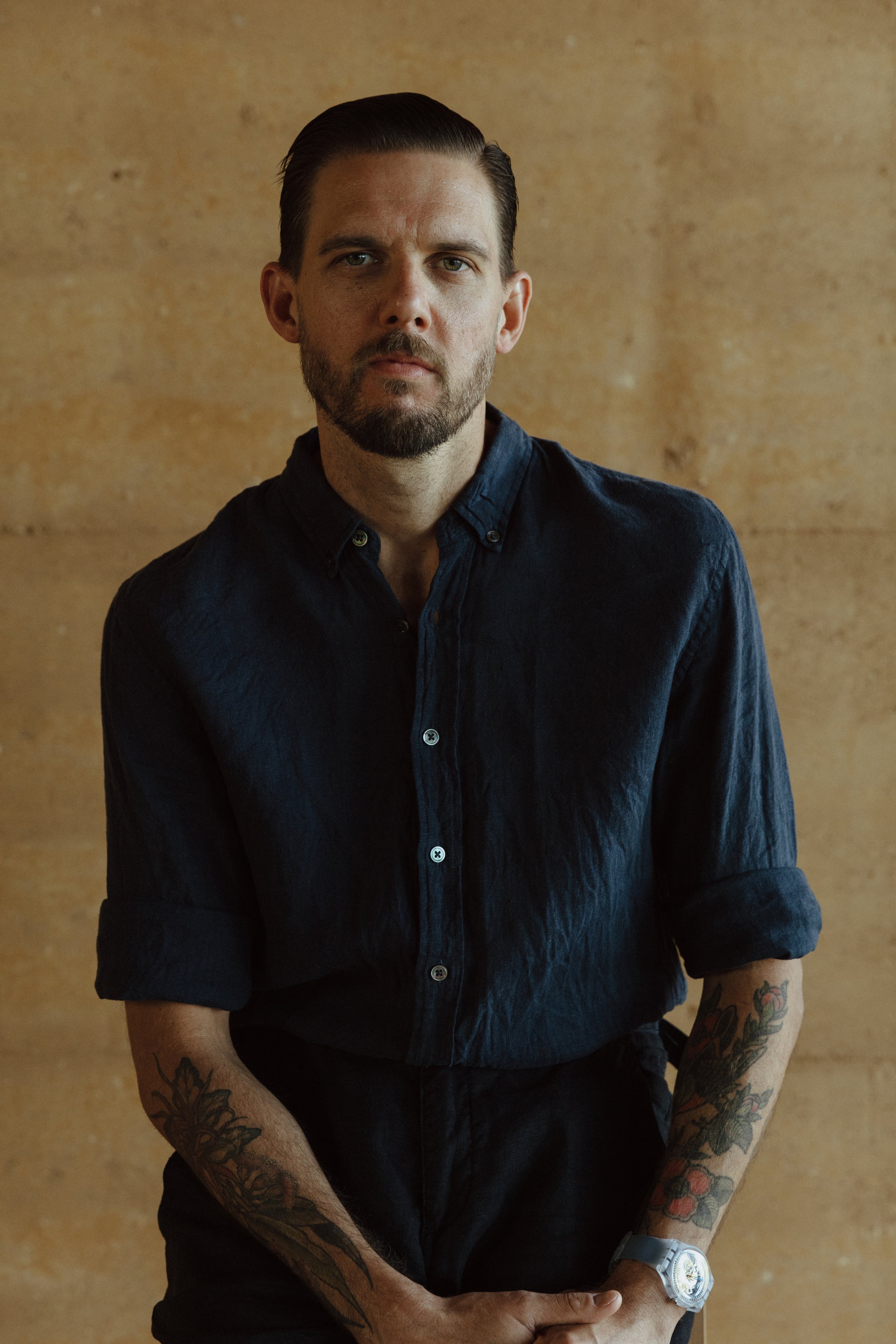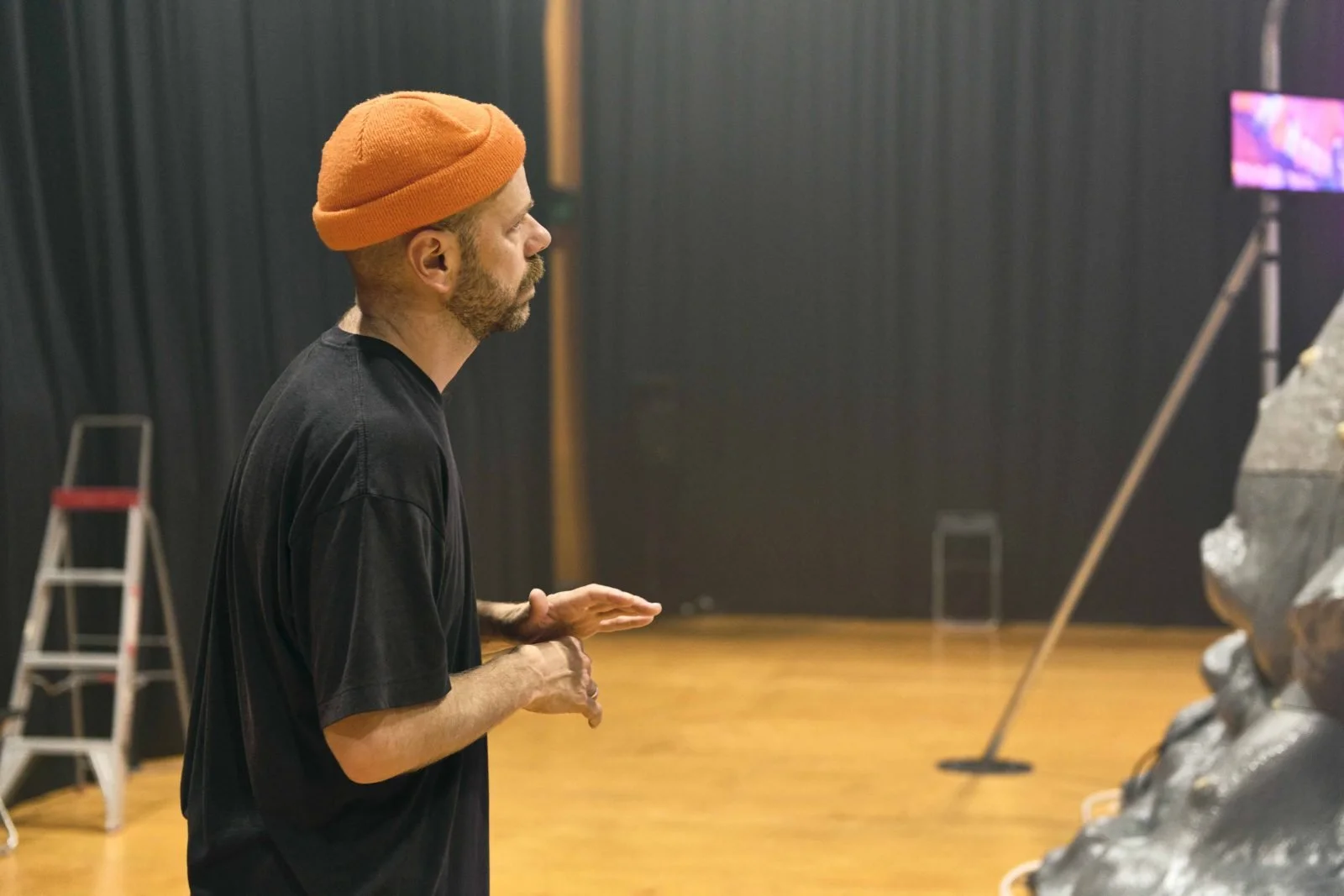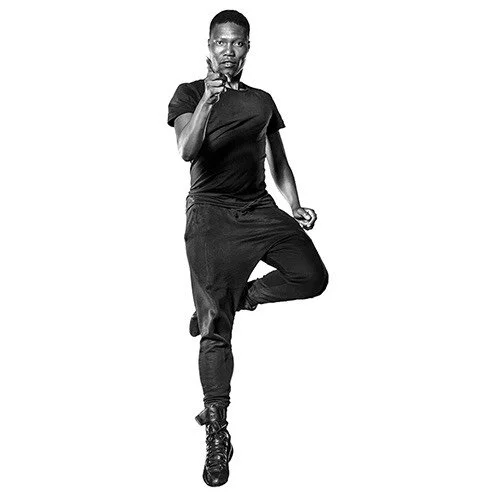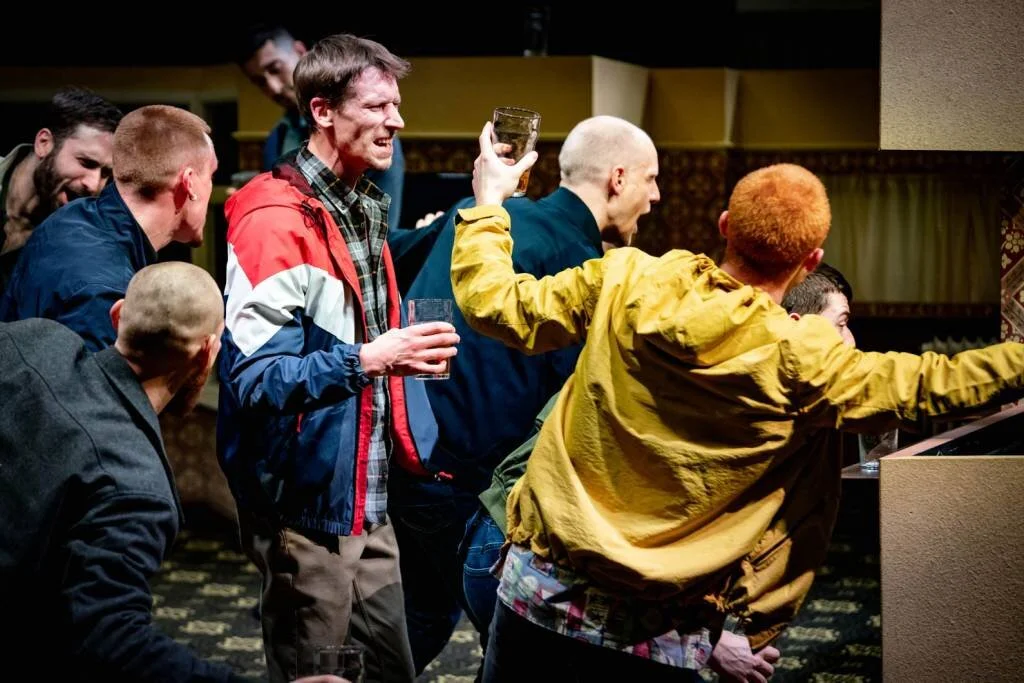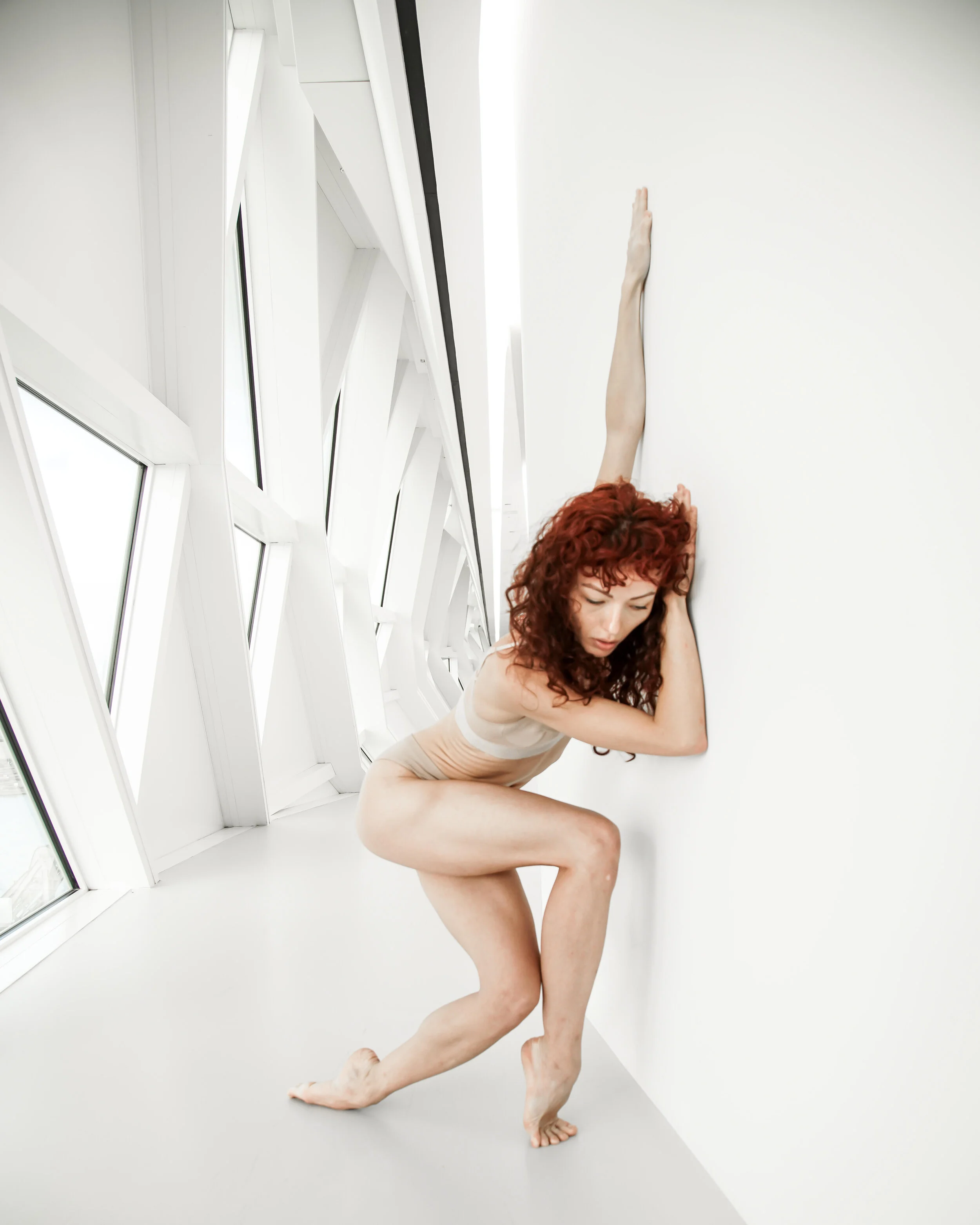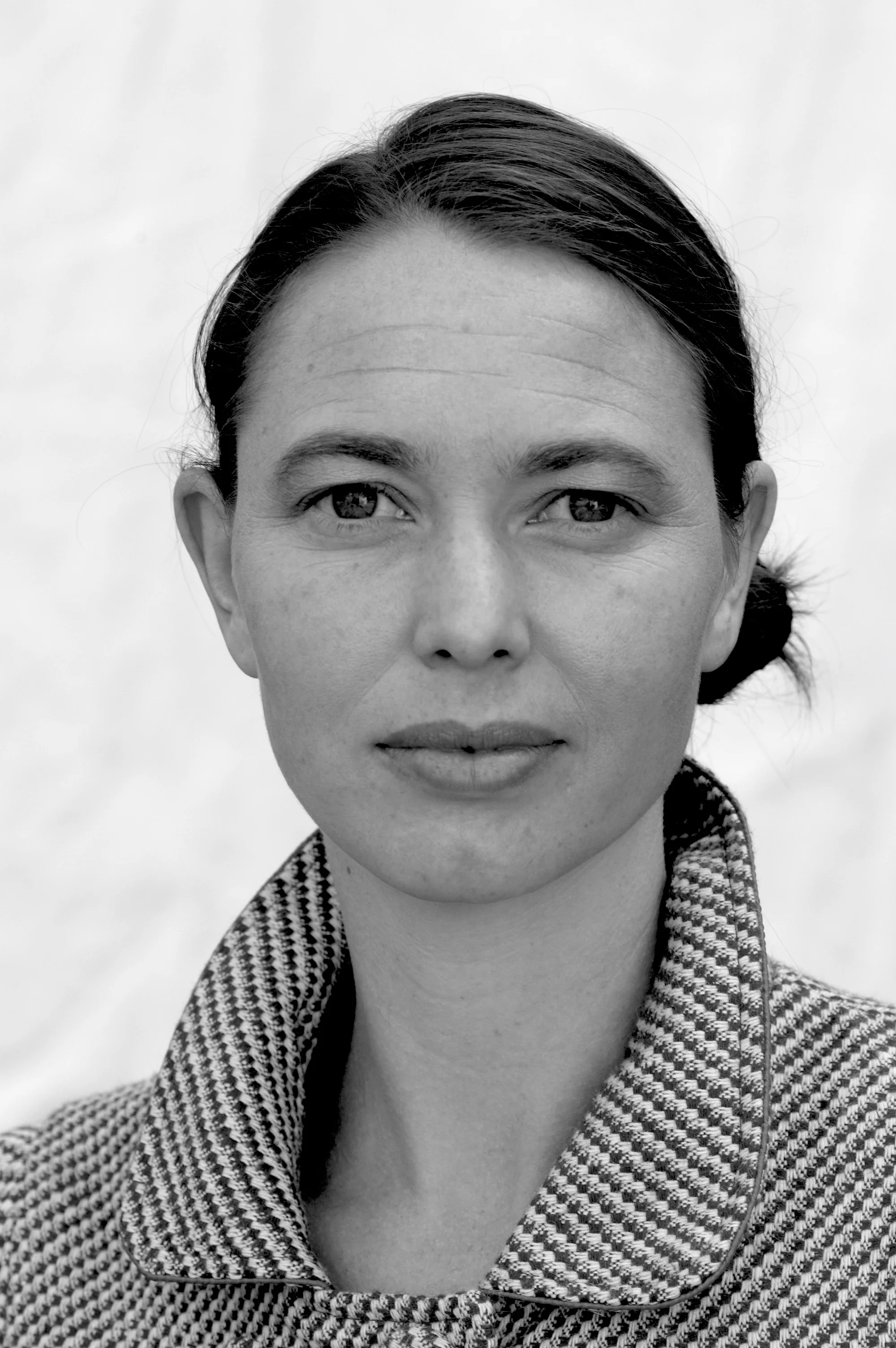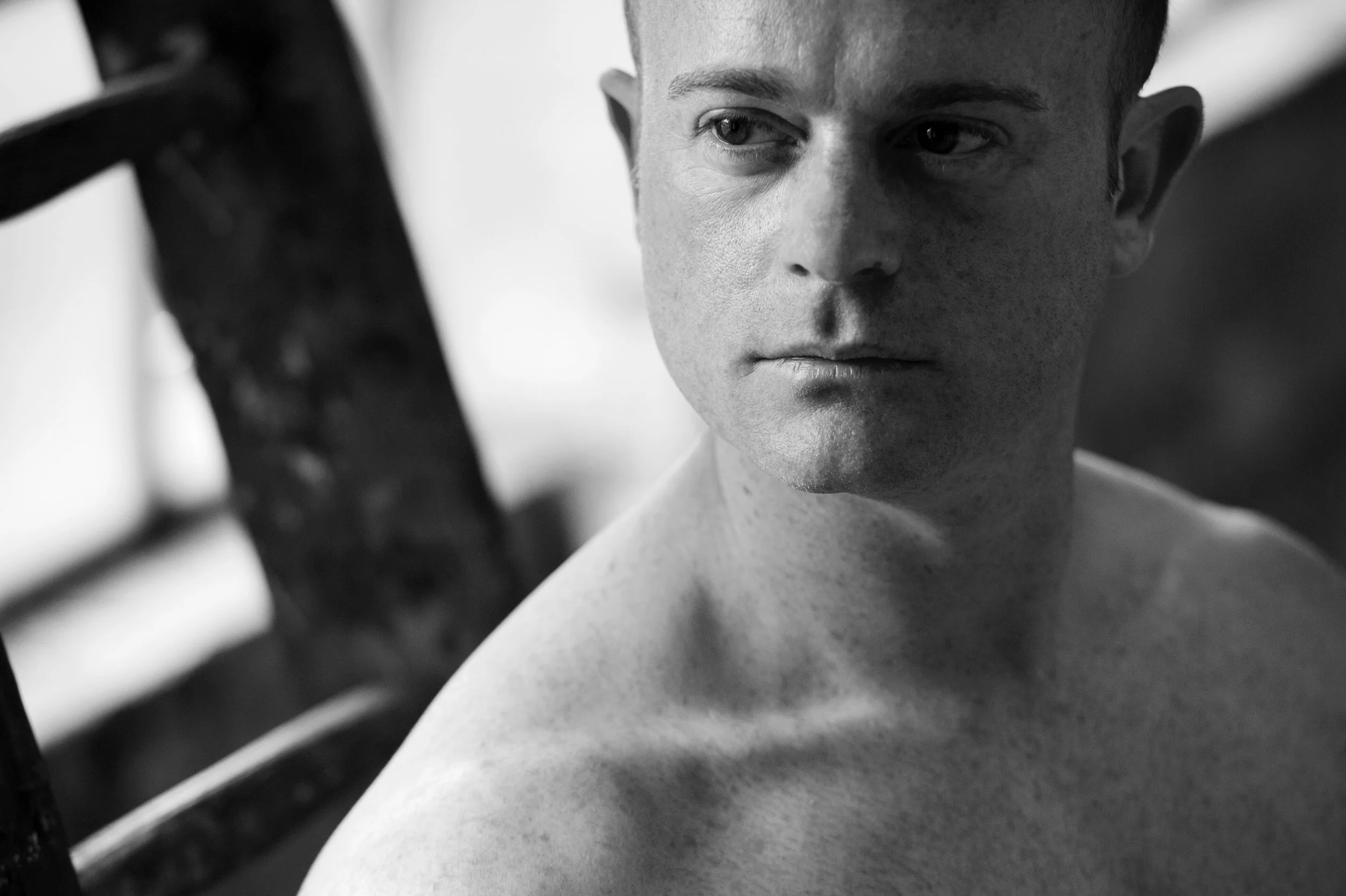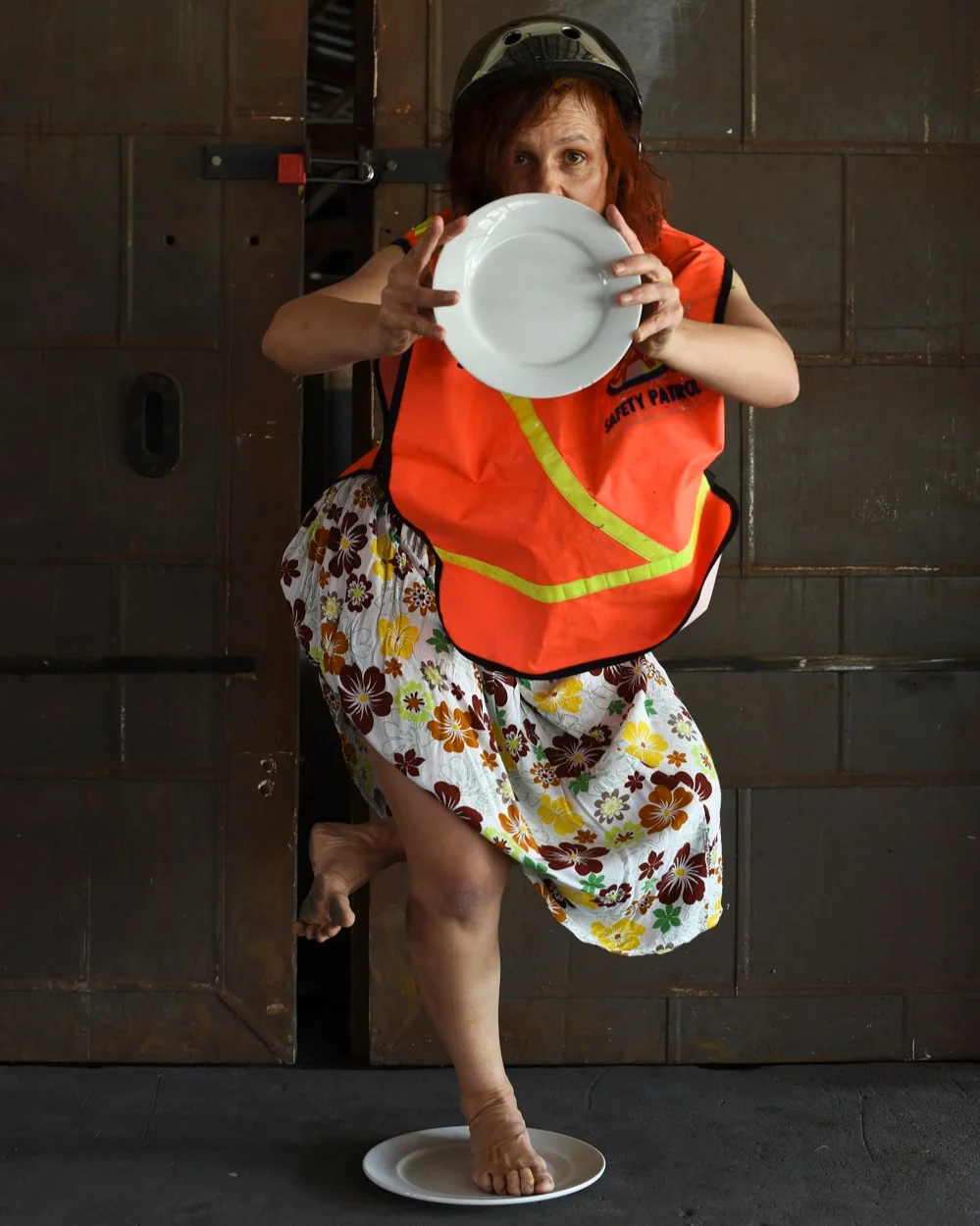This transcript is from an interview that was first published on 17th of October 2022, part of a collaboration with The Australian Ballet and their DanceX Season. This transcript has been edited slightly to help with clarity, the audio of this episode and more information can be found here. The interview starts by asking Daniel about his time starting as Artistic Director of Australian Dance Theatre.
Daniel Riley: Yeah, it's been a ride. It's been a crazy journey, really. I was appointed in officially May last year, so that’s May 2021 and then announced in June 2021. I was living in Melbourne on Boon Wurrung Country at the time, and I was in the depths of lockdown, maybe two, I don't know. It was either I couldn't go to the end of my street because I was at stay-at-home orders, or I could go to the end of my street, but the border between Victoria and South Australia was shut. So there was this long kind of pregnant pause where I actually set foot here on Kaurna Country and could come to the building and come in the doors and meet the team. And I didn't really do that until December. There was a lot of conversations and a lot of zooms, and I was also doing a whole bunch of other work in Melbourne and having to wrap all that up, but also be planning 2022 as my first year as AD. There was a whole bunch of pre-stuff. And then I arrived and I remember the first day arriving, coming and telling Nick - Nick Hays, our Executive Director, I'm going to come tomorrow. I want to come and say hi and see the building. And I remember coming to the building and just being -having this - it was a moment that I'll probably never forget, but, like, standing at the front and seeing it say Australian Dance Theatre, and then realising why I was here. The enormity of that moment of stepping inside for the first time and it was a real - it felt strange. And it wasn't a dream. It didn’t feel like a dream, but it was just this real, almost out of body kind of experience. ADT is a company that I've obviously known of my entire dance career, and even as a young dancer living on Ngunnawal country in Canberra where I grew up and knowing - seeing the company at a really early age, meeting the founder of ADT, Elizabeth Cameron Dalman, when I was 13. I didn't know she was the founder of this company at the time. She was just this lovely old woman who I knew danced and she met my father and they were teaching at a school and said, ‘oh, your son should go and join this youth dance company.’ And so I did - that company is called Quantum Leap - and I fell in love with contemporary dance because of Elizabeth Cameron Dalman. Fast forward however many years it is, and now I find myself as the custodian of the company that that lady founded is bizarre. It's so bizarre and so kind of just really beyond my thinking and imagination that I could end up as the Artistic Director here. I never saw it in my future to be the AD of this company. I always felt, especially when I got my later through the later part of my performance career or my full time performance career. I was like, I feel like I could do that. I'm good with people, and I have works that I want to make and things I want to say. And I'm good with supporting a team, and I think I have a way that I can lead an organisation, but I never would have dreamt that it would be ADT. But it's been amazing to be here in the building, getting to make what I want to make with the team that I want to work with and build a company culture, a rehearsal culture, a studio culture, but a workplace culture that I want to work in. And that feels really amazing to be able to do that, to be able to be leading and - not leading from the front, but kind of leading from within. And that feels really nice to me, and that feels like the way that I'm comfortable to lead and that feels right. And being here, I've never felt any like, I've never felt more strongly that this is where I'm meant to be at any particular time. Like, for some weird, strange reason, whether it's the ancestors or whether it was something called me here and I'm here for a reason, and that feels really good and really right.
Andrew: Amazing. It must be such a thrill for Elizabeth as well, to have that sense of, you know…
Daniel: Yeah, it really is. We've had lovely conversations. She was the first person I called after I got the phone call and after I let it sit in my head and spoke to my wife and my kind of immediate family. And I called her and I said, ‘Hi, Elizabeth. It's Daniel Riley.’ And she's like, ‘oh, hi, Daniel.’ And there was a pause, like a really long, pregnant pause. And she said, ‘and why would you be calling me?’ And she knew very well that the company is looking for an artistic director. And I just said, ‘I'm calling to let you know that I'm the new artistic director of ADT.’ And I remember her just saying, ‘Oh, Daniel, my heart is full.’ And I could hear her kind of emotional, and that filled my heart, that she was really proud of the company and proud of the choice that the selection panel made and proud that I'm here carrying her legacy and building on her quest, as she called it, her quest for an Australian dance theatre. And so I'm just carrying just now the one, the custodian, and carrying that torch for that quest.
Andrew: I get this goosebumps kind of thing, completely imagine that for her, it would be such a thrill to get that call. Do you feel like, I guess, that sense of responsibility or expectation, I guess, taking a company that has this history or has this verve I guess?
Daniel: Yeah, it's funny. I get asked that question a lot. Do you feel the responsibility and the pressure of what it is? Not really and that's not because I feel overly confident in the role. I feel quietly confident. But like I said, I'm just kind of trusting that I'm here for a reason. And that reason maybe hasn't been made clear to me yet. But I get to do - I get to build something here that I can be really proud of and that I want Adelaide and South Australia to be really proud of. Even in ADT’s history, every artistic director has changed the company, as it should. When a new artistic director leads the company, it should change, it should change the kind of work that's made, who it's engaging with, and all of those all those reasons. And for me, being here, I get to now change it to what I believe in and what I think ADT should be doing and how we should be seen and who should be seeing us and who we're engaging with and why we make work, who we make work with and for and who we present that to. So I'm very well aware of the enormity of it, for sure. That's not lost on me at all, especially being the first First Nations Artistic Director of this company. That is not lost on me at all, but that, in a way fuels my desire to succeed and my desire to be really good at the job, I guess. I don't know. And good is really subjective, whether or not I'm good at the job or not. But look, I think if the people around me are enjoying it and the work, I'm proud of the work. And if I can have a small part of changing something in the Australian dance lineage, then I can be really proud of that and time will tell whether or not that happens or not.
Andrew: Can we talk a little bit, I guess, about your vision for the company or where you may want to take it, or that contribution to dance lineage, whatever that looks like? Yeah. Do you want to share anything about that?
Daniel: Yeah. It's interesting because obviously I was appointed off a vision, right? I presented a vision of what I believe ADT could be. And being the first First Nations Artistic Director of this company, I lead first and foremost with my cultural lens. I can do that in an authentic way. I can do that in an honest and respectful way because that is my cultural practice. And for me, as I tell everybody, it says it on the front of the building, we're Australian Dance Theatre. So we should be working in Australia more often, performing, collaborating, working with the incredible array of Australian artists, both First Nations and non First Nations and diverse artists. For me, I'm inspired by our landscape, our land and my ancestors who have lived here for over 75,000 years. So for me, it's about making sure that we, as ADT, are bringing a holistic way of making and that the work speaks to a broader range of audiences and that I can bring First Nation's voice into the organisation.
Andrew: You mentioned a little bit earlier like the sense of organisation that you want to create and the way that people work together and interact. I guess that's an amazing contribution you can make as well. And often artistic directors really set the tone of an organisation. Is that something that you've kind of really considered when you've come into the role?
Daniel: Yeah, totally. Absolutely. I've worked in numerous organisations and I feel like I know what works for me personally. And I get a sense of when people in my past work, when people are enjoying work and what works, what doesn't. So for me here, if we are all, you know, there has to be across the entire organisation this sense of reciprocity and respect across the entire organisation. Every hand in this building is as important as the other, and especially in the studio, in the rehearsal and the creative space, I'm really aware and really conscious that I don't want to be the only voice heard all day. A) I get sick of my own voice, and people probably do too. So for me, it's actually about making a space that is open to - I want to be elevating all the incredible artistic voices that are in the studio. It's a collaborative environment. It's not me at the front saying do this, this and this and do it this way, and I'll do it faster. And yeah, I don't want that to be that. I bring stuff in and I pose the question and I go, how about this? Or let's go that way. But I also want to create an environment where the artists are comfortable to say, actually, Dan, this feels better, or actually what about if we go this way? Or Actually, I'm not quite sure about that. So there's this constant kind of interrogation. And I guess it's in a way, it's trying to make sure that hierarchical structures, that the studio space is a more flat one. And that really is mirrored for me, again, from Community, from First Nations community. And everybody has their role, everybody has their place. Yes, we respect deeply Eldership, but there is a more equity in that kind of artistic space or in that community space. We look out for each other in a rehearsal room, we look out for each other. We're respectful of each other, we're kind to each other. Working full time, we’re not always going to get along. Right. You never really always get along with your workmates. But that's also part of it. That's also part of that environment too, right? It's like family. It's like you're never going to get along always. Because we're all our own individual. We all have our own brains and artists, especially are the most intelligent and empathetic creatures, questioning and investigating in their own heads. I might give some choreography or an idea, I digest it one way, but they digest it a whole other way. So actually it's about allowing that process, because then I feel like that creates a more authentic work because the performers have their voice in the work
Andrew: Does that inform or define your process or style? Or when you're approaching a work, does the process change? Because I know you've got a number of things at the moment we can talk about them. That being in the rehearsal room all day. I just wonder, how does that translate?
Daniel: Yeah, and to be honest with you, this is really the first time I'm getting to really investigate that. I've made works in the past, but they've just been a commission basis. So you have set parameters of this many weeks. It's going to be this long. You have this amount of budget. So for me, this is the first time where I'm really starting from scratch and going, okay, I have an organisation in my palms. How do I want to work? And so really, it's kind of all just testing it at the moment and seeing what works, what doesn't, what I thought would work that I forced for too long, that didn't work. So it's about finding our own ways as well. What's this new way, what's the new ADT way of making work? And that's always in conversation with the artists for me as well. Yeah, I feel like in terms of my practice, it's such a hard question to answer because a lot of people ask that of any artist, right? Like, whether it be visual or composition or whatever the kind of artist is like, ‘what's your artistic practice?’ I find it really hard to distill it. And I think that's probably my practice. My practice is that the story tells me what I need to do and how I want to do that. My practice is conversation. My practice is collaboration. My practice is rhythm of making and then stripping it back. It really differs. And I guess if you ask me that question, maybe in like four or five years and I've got a couple of big works up my sleeve, I could probably distill it a bit more. But I guess up until now, the practice has been different because the environment has always been different. But there's also something really beautiful in that too. Because for me, each work and each idea demands a different presentation style depending on the work that will tell me how it should be presented. So I don't want to constantly always be making work in a proscenium theatre. Some works will go into proscenium. There's another work we can talk about in a second called Tracker that is in the round. And then there's other work that I want to make that is outside the theatre, because that's where my ancestors told stories Proscenium Theatres came with the boats when they arrived here with the explorers. For me, it's about looking at the story and looking at what's the best way to tell that.
Andrew: You see some people who have a process, but they feel sometimes like they're churning out the same stuff as well. So it doesn't adapt or doesn't change exactly. It's a very different kind of thing. So, yeah, it's really lovely. Australian Ballet have pulled together a pretty incredible season of works for DanceX, and you’ve got a piece in there, The Third. I was just wondering if you could talk a little bit about that work and the context of it.
Daniel: The Third, it was the first work I made as Artistic Director here. It's a shorter work, it's half an hour. It was made specifically to tour regionally around South Australia, and it's also paired with a film that I made last year. I was commissioned by Rising Festival to make a film. I had open access to the Melbourne Museum archive, so I was able to walk the long corridors and the thousands and thousands of cultural objects and the cultural material that sits in, temperature controlled, under stark lighting, usually in the dark most of the day. So I had that opportunity and out of that I made a short film. And the film was called mulunma - Inside, within. And I made that actually with my son Archie, who he's five now, but he was four then. So him and I perform in it together. And I directed it and choreographed it. And so that opens The Third. It's like a little interlude into this idea of archiving. The difference in archives. And The Third is an idea of it was Professor Margo Neale, actually, who works at the National Museum of Australia in Canberra. I read a book of hers called Songlines, and she talks about this idea of the third archive. And the third archive is a collaboration of Western archive - museums, libraries, filing systems, all of that - in collaboration with our cultural archive, which is the land, and that's our master archive. So when I walk barefoot on my ancestral country, I access millennia of stories and knowledge and ideas. I bring the past and the future to the present, when we can walk barefoot on our ancestral country. So when you have those two ideas, it creates a third archive that sits right in the middle, and that archive is accessible to all. So that's that meeting point of Western and, I guess, imported and First Nations ideas and Ideology, that's where the title came from. And then the work kind of expanded out from that and looking at the body as an archive. So I took this film, which we project, onto this beautiful curved wall. The film mulunma looks at reclamation of cultural material and cultural archive. And then that transitions into The Third, which is obviously a live dance theatre work of looking at the body as archive. And the body as an archive is not a purely First Nations Australian idea. Everybody understands this concept. We hold our memories, we hold so much in our body as an archival tool. But the dancers and I, we discussed these ideas of, like, what if, what is it like when two people hold a memory? And let's say that happens at Place X, where you make that memory and then you separate, and you go your separate ways. The archive is not complete. It's only complete when you are connected back at Place X. That's when it's its fullest idea. That's when it's really at it's emotional, spiritual and physical maximum of a memory, of an idea. So that's really what The Third looks at, those kinds of ideas. As I said, it's a half hour work, which is really nice, actually, and it's going to be really nice to remount it and maybe re-explore a couple of bits and pieces before we presented it at DanceX in November.
Andrew: I was really, like, drawn to also - you know, you’ve obviously got a young family and did you say your son was five?
Daniel: Yes.
Andrew: in the film, obviously, he's engaging with the stuff that you're doing and art and dance and culture. Is there something you want to impart, I guess, to your children in that way?
Daniel: Absolutely. My father, which is where my Wiradjuri heritage comes from, my paternal line. So my father didn't grow up around culture, he didn't grow up around language, dance, song with his feet on Wiradjuri Country that wasn't available to him. And I just feel really fortunate that I get to explore. I have the oldest form of storytelling, which is dance, as my tool to access my cultural identity. I get to make work and theatre and I get to make art that connects me to my lineage, my cultural heritage, which is Wiradjuri from Western New South Wales. And so all my work now, I constantly thinking about my son Archie and my daughter Billie, who's 14 months old, for them to experience it. My daughter Billie, she was in rehearsal today. My son Archie grew up the first two or three years of his life, like, on tour with me when I was with Bangarra Dance Theatre and just being in the artistic environment and being surrounded by people is such a beautiful gift, I think, that I can give to them as well. But, yeah, for me, that I can be making work that interrogates, for me, my cultural identity, but then therefore my son and my daughter's identity and who they are at a young age - that they can continue to carry that and look, when they get older, they can continue to connect in whatever way they choose. But for me, there's something about art, and especially the physical form that I get to connect is really special for me to be able to share that with them.
Andrew: I was just thinking about dance and music, and I always find it fascinating. You put music on and kids dance, they start moving. It's like this innate desire that humans have and that as we get older, unless you're kind of doing dance classes and stuff, we become separated from that physical and that sense of -
Daniel: It’s instinctual, it’s pure instinct, to move. I've been saying a lot quite recently in this idea that I find contemporary dance actually the most accessible form because it is in every way instinctual. The way I make is instinctual in terms of what I feel my body is. And as I saying before, like my incredible six company artists, they have their own instinctual way of moving. So there is something deeply emotional and spiritual about movement. Physicality connects us to song and beat and the rumble of sound and beat is the rumble of the earth. And so there is this connection between the body and the land in vibration. And that's a really instinctual thing. And I think that's something that people shouldn't be afraid of.
Andrew: Contemporary dance, though of a lot of art forms, is one of the hardest ones to sell tickets to. It's one of the ones that people feel like is not for them or they don't understand it. There's all these barriers. Partly why I started this podcast, because I've always loved it, being drawn to it. And people are just like, I don't get it, or I don't. And I similarly say, well, it's just bodies moving. Just like, let it wash over. You will find something that connects with you in that way. There just seems to be this barrier.
Daniel: Yeah, I know, and I totally get that a lot too. I don't get it. I don't understand it. But my answer is often like, that's okay, we don't have to understand everything, right? There's this great desire to be spoon-fed stories all the time. You go to the ballet, for example, and it's a beautiful art form. But you know what it’s about going in. So in a way, it's so easy to digest. It's like, okay, I get it. A boy meets girl, girl falls in love with someone else, boy dies, et cetera, et cetera. And usually the male comes as a hero to save the female. And so there is something that there's a beautiful poetic simplicity in that. But I think there's something about contemporary dance that people are fearful of, afraid of what they think personally. It's like, ‘oh, no, I don't get it. I don't want to try’, or, ‘I thought it was this, but maybe that's wrong’. Maybe it is wrong, but that's okay. Contemporary dance is really opening a door to an intimate kind of personal connection as well of, what do you think that is? It's okay that we all think something different. We don't have to all think the same thing all the time. And that really leads back to this idea of what I was talking about in terms of the artists. Every artist is different. Every artist should be different because we all have different things to say, and so it kind of leads into that, too. And I've never really thought about it until then. But contemporary dance, you know, it's not about being fearful that it's just about being open to accepting and experiencing something. It may move you emotionally, you may just like the choreography because it physically moves you. You find yourself swaying and moving in your seat. It's imagery based, and again, it's instinctual. So we're not going to change and knock down those barriers of fear overnight, because I feel like that's a long battle. But I do think there is more in contemporary dance than people give it credit for.
Andrew: Maybe it's even the term ‘contemporary’ in some respects because, like, the dance aspect, it's positioned in opposition to classical dance or like, ‘traditional’ ‘contemporary’. And it's been contemporary for 40 years or so. It's like, what does that word add to the dance aspect, maybe?
Daniel: Yeah, well, contemporary just brings it to the now. Isn't that the word? Contemporary is now. So the contemporary dance I'm making is more contemporary dance than anything that was made ten years ago, because it's reflecting the world outside. The artists who I work with, they come from outside today, this morning, and they came inside. That's contemporary that you can't get any more now than today.
Andrew: I’ve got one final question for you. What's inspiring you in the world at the moment? It could be in the world of dance. It could be in the world more generally. I think there's a lot of doom, gloom, but what is something that's really, like, shining for you?
Daniel: What is shining for me? Well, the sun hasn't been shining here on Kaurna country for a good couple of days, so that's definitely not the sun. What's been shining for me? I think what lifts me every day at the moment artistically, is just the incredible resilience of artists, this fierceness and fearlessness of being an artist today. Having the courage to continue to make art and to continue to want to do that, that's incredibly inspiring. My company artists inspire me daily and just kind of yeah, the community really is constantly inspiring me, looking to my friends afar or more nationally or regionally. And sometimes I get inspired by, it's either a book or it's a painting, it's a photograph, it's a song, it's a conversation, a podcast. Like, it kind of comes from everywhere, really. But I guess what's shining for me at the moment is this resilience of artists, especially when Arts are very low on the priority list in terms of government and the priorities of that. So it's just incredibly uplifting that we're still making, that artists are still making, and my First Nations community are still making and still fighting to be heard and that we are here and we are telling stories and we are important to the fabric of this nation. Yeah, I think that's not stressed enough, really. We are an important part of the fabric of who we are as a nation. Artists. And that's not really explored or celebrated enough, I don't think. And also, it's not invested in enough.
